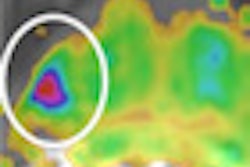Dear Molecular Imaging Insider,
A decade has passed since electronic posters were first introduced at ECR, but interest in them remains as strong as ever. Five exhibits received the top award, a Magna Cum Laude, at ECR 2013, and arguably the most interesting was a Spanish poster about how diffusion-weighted imaging provides useful qualitative and quantitative information on tumor cellularity and tissue structure in prostate cancer.
These developments represent a timely boost for cancer detection. To read more, go to our Molecular Imaging Digital Community, or click here.
PET/MRI also generated plenty of interest at the Vienna congress. Dr. Heinz-Peter Schlemmer of the German Cancer Research Center in Heidelberg advises caution, arguing that the technique cannot enter routine clinical practice before diagnostic accuracy, influence on therapeutic management, and economic factors have been carefully considered. Get the story here.
Also in Germany, MRI/PET/electroencephalography hybrid scanning has been achieved for the first time by a team from Jülich. An article in the Journal of Magnetic Resonance describes the group's work and makes a case for multimodality imaging at 3 tesla and 9.4 tesla. To learn more, click here.
Molecular imaging has become the battlefield of a turf war, and everybody wants to be a molecular imaging warrior, according to the Maverinck. In his latest column, he aims to shed light on the definition of this fashionable term. Click here for this article.
Textural variables derived from PET images reveal intratumor heterogeneity and may help predict a patient's response to chemotherapy, believe U.K. researchers, who have explored their associations with the clinical responses of breast cancer patients in a recent article published in Physics in Medicine and Biology. For more details, click here.
If you have an idea for a topic you'd like to see covered, please feel free to send me an email.




















